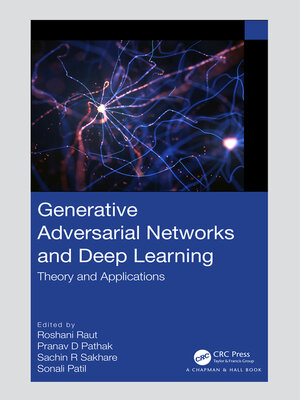
Sign up to save your library
With an OverDrive account, you can save your favorite libraries for at-a-glance information about availability. Find out more about OverDrive accounts.
Find this title in Libby, the library reading app by OverDrive.



Search for a digital library with this title
Title found at these libraries:
| Loading... |
This book explores how to use generative adversarial networks in a variety of applications and emphasises their substantial advancements over traditional generative models. This book's major goal is to concentrate on cutting-edge research in deep learning and generative adversarial networks, which includes creating new tools and methods for processing text, images, and audio.
A Generative Adversarial Network (GAN) is a class of machine learning framework and is the next emerging network in deep learning applications. Generative Adversarial Networks(GANs) have the feasibility to build improved models, as they can generate the sample data as per application requirements. There are various applications of GAN in science and technology, including computer vision, security, multimedia and advertisements, image generation, image translation,text-to-images synthesis, video synthesis, generating high-resolution images, drug discovery, etc.
Features:
The book addresses scientific aspects for a wider audience such as junior and senior engineering, undergraduate and postgraduate students, researchers, and anyone interested in the trends development and opportunities in GAN and Deep Learning.
The material in the book can serve as a reference in libraries, accreditation agencies, government agencies, and especially the academic institution of higher education intending to launch or reform their engineering curriculum






